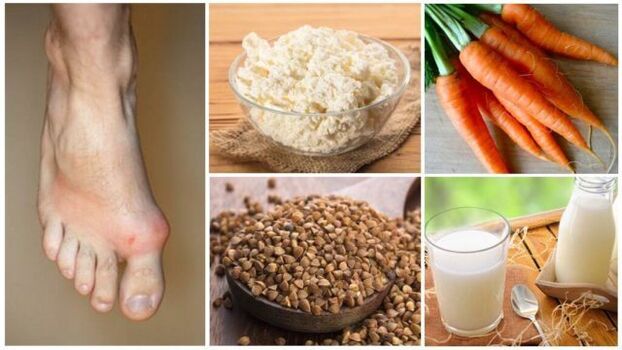
Improper nutrition, coupled with impaired absorption of nutrients, leads to progression of gout. The disease develops when the amount of uric acid in the blood exceeds the permissible limit (more than 420 μmol / l for men, For women - 350 μmol / l). Disorder of metabolic processes leads to the fact that salts of this acid settle on intestinal walls, blood vessels, articular surfaces and damage vital organs of human life.
Over time, the disease becomes chronic with recurrent relapses. In the fast period, patients experience excruciating pain at the site of localization of the disease process. Normalizing dietary uric acid levels for gout andHelps reduce the incidence of recurrence.
Why a diet for arthritis?
An important function of therapeutic measures is to reduce the nature, frequency of manifestations of the disease. This can be achieved by reducing the amount of uric acid in the body.
Gouti attacks develop due to:
- Eating large amounts of purine;
- Metabolic Disorders.
Adaptation of the diet allows you to begin the correct process of assimilation and excretion of substances. Medical measures aimed at eliminating the causes of the development of disease are closely associated with adherence to the restrictions of some food addictions. ProperlyWith the help of a diet menu created, you can slow the progression of the disease.
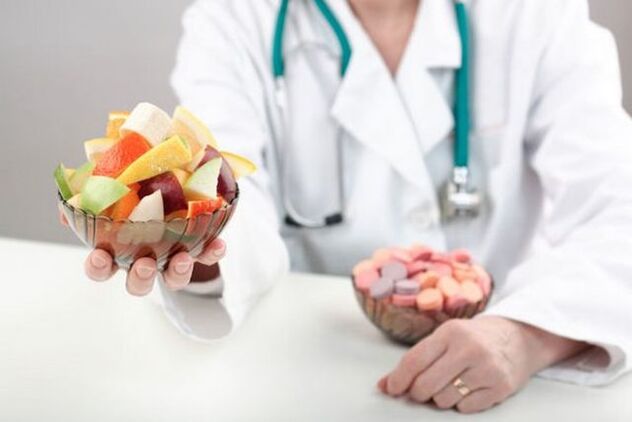
Foods that make up a person's daily diet should include foods that contain large amounts of beneficial substances.
Nutritional therapy for gout aims to reduce the symptomatic manifestations by eliminating the food components that stimulate them. The product a person eats every day has a tremendous impact on the health status in general, in the human body. Responsible for chemical processes occurring throughout life.
What not to eat with arthritis?
Based on studies, scientists have identified a list of products that directly provoke the primary development of the disease and its further progression.
The list of what not to eat for arthritis includes:
- Smoked Spicy Cheese and Cheese Products;
- Cholesterol-rich meat and bone products (pulp, hoof, bulldozki of young animals and pigs);
- Flesh and bone fat, ear;
- Fish with a high fat content (sardines, sprats);
- Pickled vegetables, pickled fruits (cabbage, watermelon, cucumber, apple);
- Hot, cold smoked products;
- Legumes (peas, beans, soybeans, lentils);
- Saag, which contains oxalic acid (spinach leaves, sorrel, rhubarb root);
- Hot spices, sauces;
- Some varieties of vegetables (Brussels sprouts and cauliflower, radish);
- The internal organs of animals obtained during butcher carcasses (kidneys, liver, lungs, heart, brain);
- Oatmeal;
- Products using confectionary fat;
- Alcohol of any percentage;
- Fruits and berries (grapes, raspberries, figs);
- Hot, spicy and ethereal spices (bay leaves, horseradish, chili-pepper);
- Fat and oil products of animal origin (lard, margarine, lard);
- Canned Meat, Fish and Vegetable Products.
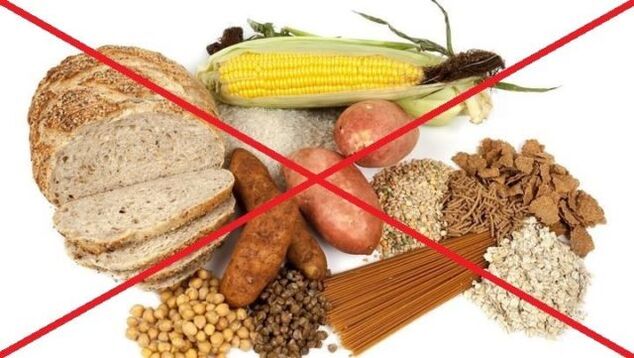
If the diet is not balanced or it contains a high amount of fatty, spicy or heavy food for the digestive system, the person's metabolism may be disrupted.
The list of products, it is recommended to limit the use of:
- Coffee, strong tea;
- butter;
- plum;
- Nightshade vegetables (eggplant, tomato, chili);
- Table salt, granulated sugar;
- Mushrooms (especially at the time of discount).
In order to ward off an attack, as well as to maintain a state of remission, it is important to remove the above mentioned foods from the diet for a longer period of time.
What can you eat with arthritis?
List of foods recommended for use by patients with this disease:
- Dietary meat products (rabbit, poultry, lean meat);
- Lean white fish (pike, pike perch, cod, pollock);
- Bran and rye bread;
- Chicken Egg (except yolk);
- Cereal dishes (rice, wheat, buckwheat, millet, pearl barley);
- Fresh vegetables (beets, carrots, cucumber, cabbage, potatoes);
- Seasonal fruits, berries (melon, watermelon, apricots, strawberries, peaches, cherries, blackberries, green apples);
- Pasta;
- Nuts kernels (hazel, walnut, cedar);
- Herbal tea and decoction (Dubrovnik, Basil, Katnip);
- Fermented Milk Products, Cheese;
- Freshly squeezed juices, fruit drinks, compost;
- Ripe tomatoes;
- Spices (turmeric, fennel, basil);
- Vegetable oil (olive, rapeseed).
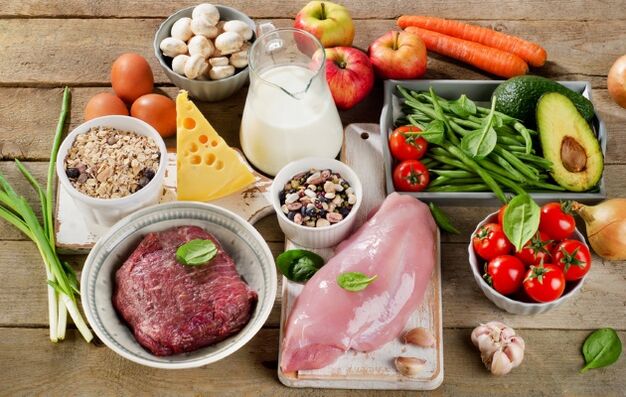
Nutritional therapy for gout will help the patient get rid of unpleasant and painful symptoms at home quickly.
A limited amount of natural honey is useful for arthritis. This product is suitable as an alternative to sugar.
Honey has many beneficial properties:
- Immune stimulant;
- Antioxidant;
- Improve metabolic processes;
- Bactericidal.
During the acute period, you should not misuse this beekeeping product. Patients with this disease need to eat foods rich in vitamins, trace elements, amino acids. Fish oil is a useful supplement medicine for rhinoceros.
Common food rules
Removing certain prohibited foods from your normal menu does not guarantee immediate relief. In addition, the list of products varies depending on the stage and severity of the disease. Complying with more stringent restrictions than.
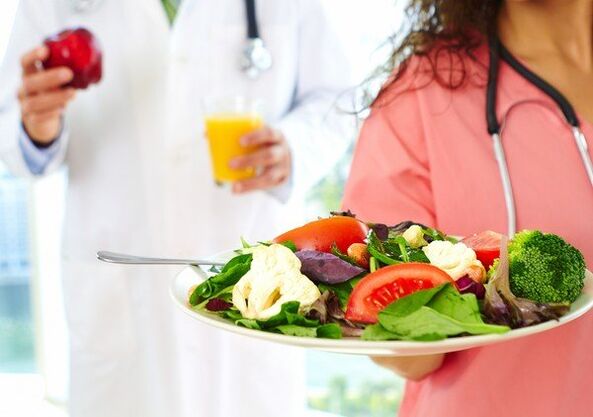
There is a common set of rules for patients with this disease, which are important in dietary therapy as follows:
- Eat small portions several times a day at small intervals (5-6 times). The amount of acetone in urine increases due to hunger and it can prolong the course of the disease.
- Chew the food and eat it, do not overeat.
- Limit the amount of table salt used in the preparation of dishes (up to 5 grams per day). The salt has the property of retaining fluid in the tissues, which, in turn, forces the deposition of uric acid salts.
- Optimize body fluid balance. To do this, it is recommended to drink at least 2 liters per day.
- Arrange for fasting days. Preferably vegetable, dairy and fruits (with the exception of those prohibited for consumption).
- Stick to long-term restrictions, as short-term use of therapeutic diets is ineffective.
People suffering from severe metabolic disorders and with a history of diabetes and gout need to exclude recipes that cause a surge in uric acid and insulin levels in the blood. Diet for gout and diabetes reduce these indicatorsIs designed to do, so as to avoid the development of intensities and complications.
How to prepare food properly?
Restrictions on the grocery list are not the only thing to be observed. It is important to choose the right cooking method when preparing your meal.
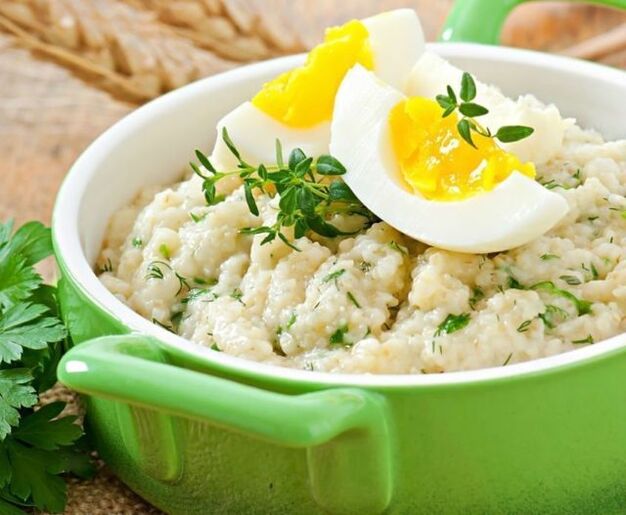
With the exception of meat processing, there are no special requirements for the preparation of products.
Cooking is allowed in the following ways:
- For the couple;
- Cook;
- Mitigation;
- Boil;
- Lethargy
Cooking is contraindicated:
- Fry;
- Smoking;
- Pickling and pickling;
- Fermentation.
Do not use stale, burnt food. The temperature regime of the consumed food should be optimal for the meal and should not exceed a temperature of 40 ° C. The food should not be thick and hard. If necessary, using a blenderIndividual dishes can be chopped.
Effective diet: menu for every day
Medical nutrition should be tailored to the physiological needs of patients in terms of content of vital components (protein-carbohydrate-fat balance), calories, vitamins, microelements, amino acids.
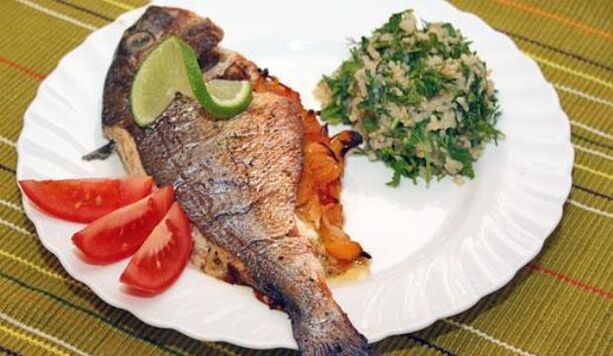
Estimated diet for gout and high uric acid:
one day
First breakfast: boiled cod, mashed potatoes, black bread, white cabbage salad, with sour cream, a cup of weak coffee with saccharin.
Second Breakfast: Paneer casserole, boiled egg, bran bread, tea drink.
For lunch: Vegetarian soup with fried roots and potatoes, beef stew, buckwheat porridge, fresh cucumber, 1 apple.
Dinner: carrot cutlets, pasta, milk, biscuit biscuits.
At night: 200 ml kefir.
Second day
First breakfast: stewed cabbage, 1 boiled egg, black bread, cappuccino.
Second Breakfast: Cappuccino, Biscuit Biscuits.
For lunch: lean borscht, bran bread, cooked poultry fillet, boiled rice, fruit jelly.
For dinner: stewed potatoes with vegetables, vegetable casserole, bran bread with butter, a glass of broth.
At night: 250 ml yogurt milk.

day 3
First Breakfast: Vegetable salad (white cabbage, carrots, apples), weak coffee.
Second snack: cottage cheese, rose broth with sour cream.
For lunch: barley soup with sour cream, steam cutlets, mashed potatoes, berry jelly, whole grain bread.
For dinner: carrot cutlet with fruit, semolina casserole, a glass of milk.
Before bed: Boiled plums.
Fourth day
First Breakfast: grated carrot with sour cream, wheat porridge, a glass of green tea.
Second snack: dry fruit cutlets, compote, biscuit biscuits.
For lunch: boiled chicken, fruit jelly, black bread with milk noodles, cooked pumpkin and potatoes.
For dinner: baked cheese cake in the oven, carrots and apple cutlets, a glass of tea with lemon.
At night: 200 ml warm milk.
Day 5
First breakfast: buckwheat milk, oatmeal cooked in green tea.
Second Breakfast: a glass of fresh carrots.
For lunch: Vegetable rice soup with sour cream, boiled beef pulp, beet caviar, basil extract with honey, black bread.
For dinner: pumpkin casserole with sour cream, a glass of weak tea, crackers.
Before bed: Honey is mixed in the rose flower.
6 days
First Breakfast: Chicken Protein Omelette, Beats, White Bread, a glass of weak coffee.
Second Breakfast: Tori Casserole, Fruit and Berry Compote.
Lunch: vegetarian barley soup, boiled potatoes, stewed meatballs, jelly, black bread.
Dinner: rice boiled in milk, drinking a weak tea.
Before bed: a glass of yogurt.
The standard nutritional diet is prepared by a physician. The combination choices for permissive dietary food are varied. The dietary number 6 is common for gout. Its main principle is the exclusion of foods and dishes with a high purine component, the inclusion of alkaline drinks in the diet. Processing is gentle during cooking and cooking. An independently compiled menu with restrictions on the amount and nature of food can lead to a long course of disease.














































































